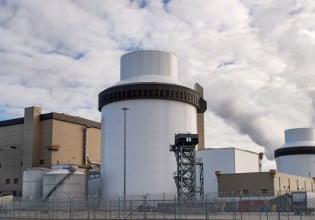The Dutch Center for Sustainable Water Technology or Wetsus, and Norway's independent research organization SINTEF, working with power company Statkraft, have invented devices that generate electricity by mixing sea and river water.
"Water will be the coal of the future," French science-fiction writer Jules Verne predicted in 1874. More than a century later in a world seeking clean alternatives to fossil fuels, Dutch and Norwegian scientists believe they can help turn Verne's dream into reality.
It might seem like an exercise in scientific theory destined only for high-tech laboratories, but the process' creators and the European Union, which funds the Norwegian research, believe the idea's time might have come, according to a recent report by Reuters.
The new devices are based on a natural process; when a river runs into the ocean, a huge amount of energy is unleashed because of the difference in salt concentration. The two projects use different methods to harness the electricity. The Dutch apply something called reverse electrodialysis while the Norwegians use a kind of osmosis.
Both methods rely on membranes or thin films made of special material used for chemical separation. The idea of producing electricity from salt and fresh water was first explored during the energy crisis of the 1970s, but membrane technology was not sufficiently advanced and scientists dismissed the process as hopelessly expensive.
The membrane industry has matured since then and is now widely used in water and pollution treatment, power generation, production of medical, biotech and electronics devices. The main challenge is finding membranes that are efficient and robust enough to boost production, but also inexpensive.
The scientists believe it will take at least 5 years to develop cheaper membranes, test them and be able to put the project on the market. Power-from-water may be ready to seriously challenge other renewable energy technologies by 2010.
The new power plants can be built wherever fresh water meets salt water, such as the outlets from existing hydroelectric power stations, and could even be placed underground.
Statkraft and the European Commission put the production potential in Europe at 200 terawatt hours a year, or nearly twice the electricity consumption of a country like Norway.
The potential in Norway alone is estimated at 10 percent of its annual power needs. The river Rhine, for instance, could deliver 3,000 megawatts of power where it flows into the sea in the Netherlands, the equivalent of five big coal-fired plants.






